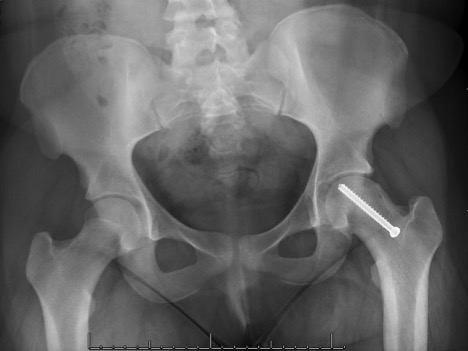
 POSNA.org
POSNA.org
Doctors divide SCFE into two main types, stable and unstable. Stable SCFE is when the child or adolescent can still walk on the leg. They may have pain or a limp, but they can still put weight on the leg. An unstable SCFE is when the patient cannot walk, and the pain is similar to having a broken leg. This is an emergency and the child needs to be brought to the hospital as soon as possible.
Most patients complain of pain in the groin or hip, but some patients complain of pain in their thigh or knee. The patient may not be able to walk or may walk with a limp. Sometimes the patient may walk with the affected leg turned outward. Many kids have been told they have growing pains or a muscle pull because of the thigh and knee pain.
Examination includes a check for pain and motion in the hip. The way the hip slips, the leg tends to point out. As the hip is flexed, this pointing out is called “obligate external rotation.” In this picture below, the patient has a right SCFE. The patient’s left leg remains straight as the hip is flexed. On his right leg, the leg rotates out, or externally, as the hip is flexed. In addition to “obligate external rotation,” the child will have a limitation of internal rotation asymmetric to the other side.
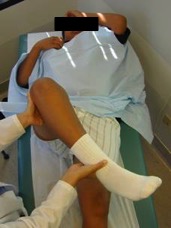
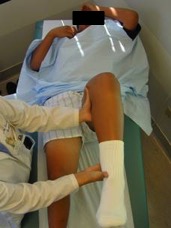
The diagnosis is confirmed with X-rays. The X-ray includes the entire pelvis, so that the hips can be compared. The most important view is the “frog lateral.”
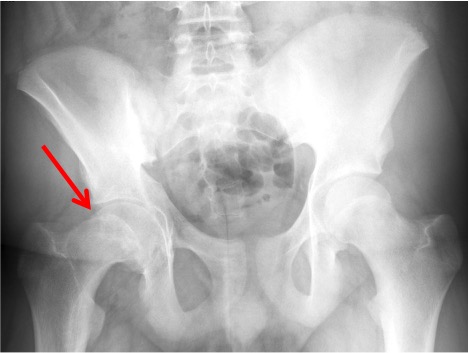
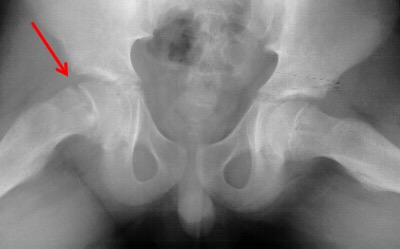
This problem must be treated with surgery. The hip is held in place with one or two screws to prevent further slippage. The surgery helps with the pain, but the leg will still point outwards when the patient is walking. Sometimes further surgery is needed to improve the shape of the hip in the future.
Outcomes vary after this problem. If the slip is stable and treated quickly, most patients return to sports and activities. If the slip is not stable, there is a risk of loss of blood supply to the ball of the ball and socket joint (femoral head). Unfortunately, this problem sometimes leads to pain, limp, and the need for further surgery.
